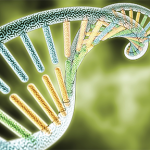
Dr. Klareskog did not want to abandon the clinical side of rheumatology, so he continued his education as a clinical fellow at Uppsala University Hospital from 1983–90. He pursued research part time during this period. Then, in 1993, Dr. Wigzell, who had moved to the Karolinska, recruited him to join the Karolinska Rheumatology Clinic and contribute to the establishment of the Center for Molecular Medicine, where rheumatology research now comprises 12 collaborating research groups.
Returning to his interest in the environment and public health, Dr. Klareskog then formed alliances with epidemiologists to better pursue the mystery of genetics and environmental factors in RA. Taking advantage of the Swedish RA patient registry, he set up a large, case-control study with epidemiologist Lars Alfredsson.
Since 1995, the registry work has incorporated collection of details from RA patients that had heretofore not been explored, such as lifestyle and environmental exposures before onset of RA. Dr. Klareskog admits that many other clinical researchers at the time questioned the collection of these details. But then, with the genetic revolution in the early 2000s, he and his colleagues were positioned to begin to examine genetic and environmental interactions, such as the venture with Dr. Gregersen’s lab in 2005. The EIRA project has increased understanding of how environmental factors, such as smoking, can trigger immune reactions against defined autoantigens.4-7
Collaboration Is Key
Throughout his career, Dr. Klareskog forged his notion of the role of collaboration. To advance the science, he reasoned, it is imperative to foster sharing rather than rationing breakthroughs.
“In order to characterize gene/environment interactions in rheumatoid arthritis, he had to work with many people from many countries and get them to trust each other, share material and share data,” notes Jane E. Salmon, Professor of Medicine and Professor of Obstetrics and Gynecology at Weill Cornell Medical College and the Collette Kean Research Professor at the Hospital for Special Surgery in New York.
The collaborative approach has also informed his mentorship of trainees. At last count, more than 60 fellows have trained under his supervision. “Being a professor at Karolinska allows you to encourage younger fellows and instill in them the fascination with scientific discovery, and it is, of course, gratifying to share scientific work with colleagues and trainees from all over the world,” he notes. In fact, there are currently more than 20 different nationalities represented in the rheumatology research laboratory at the Karolinska.
